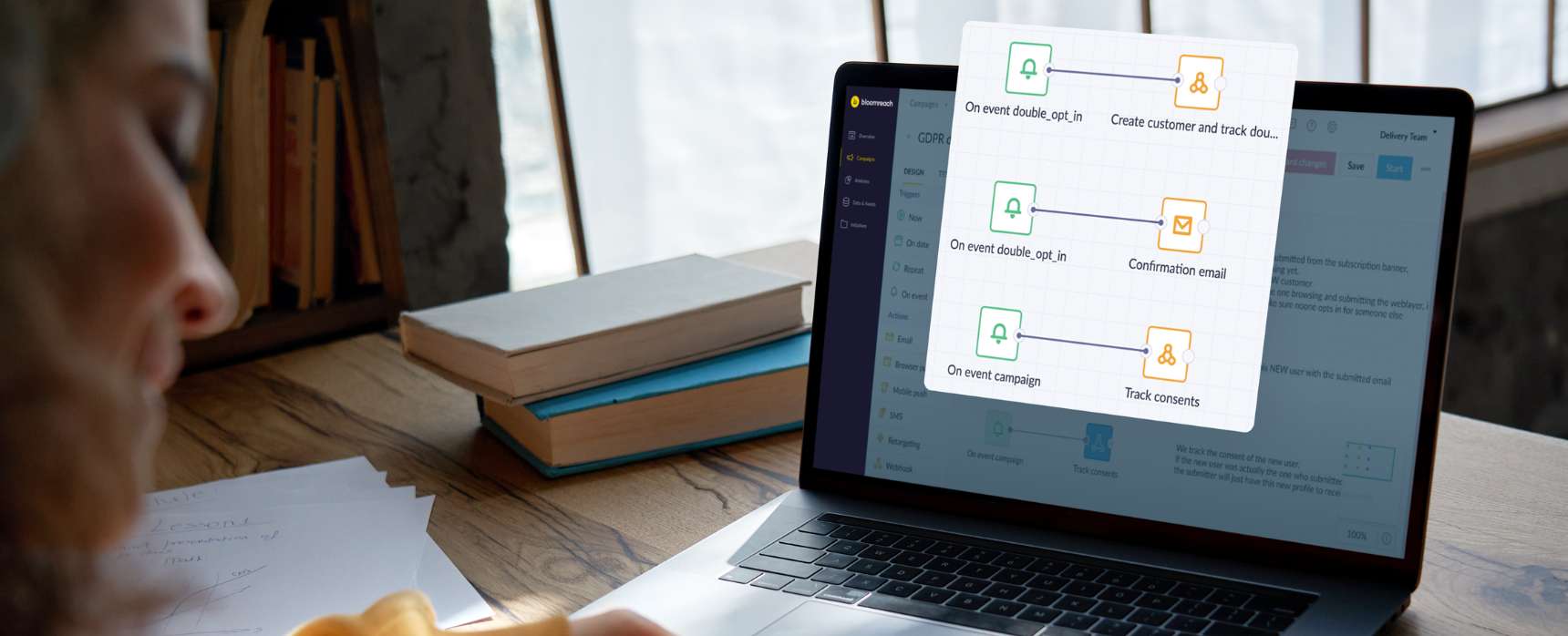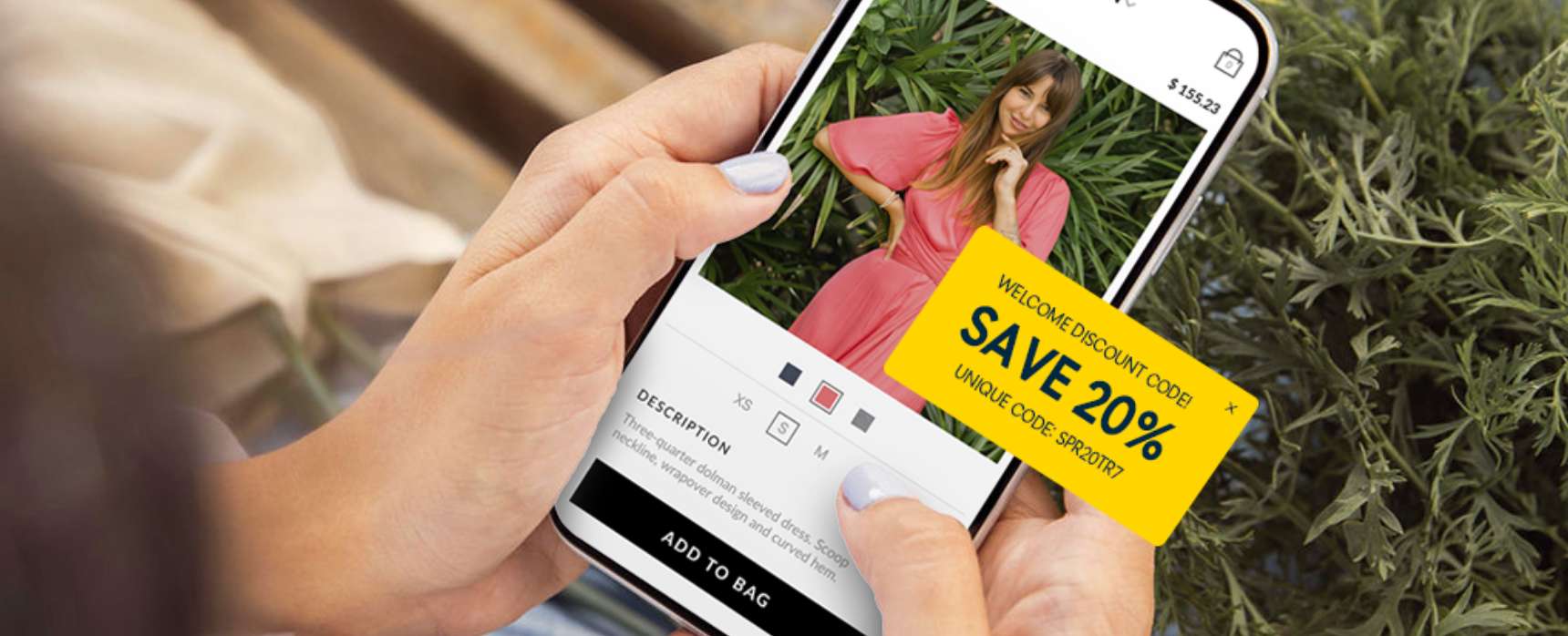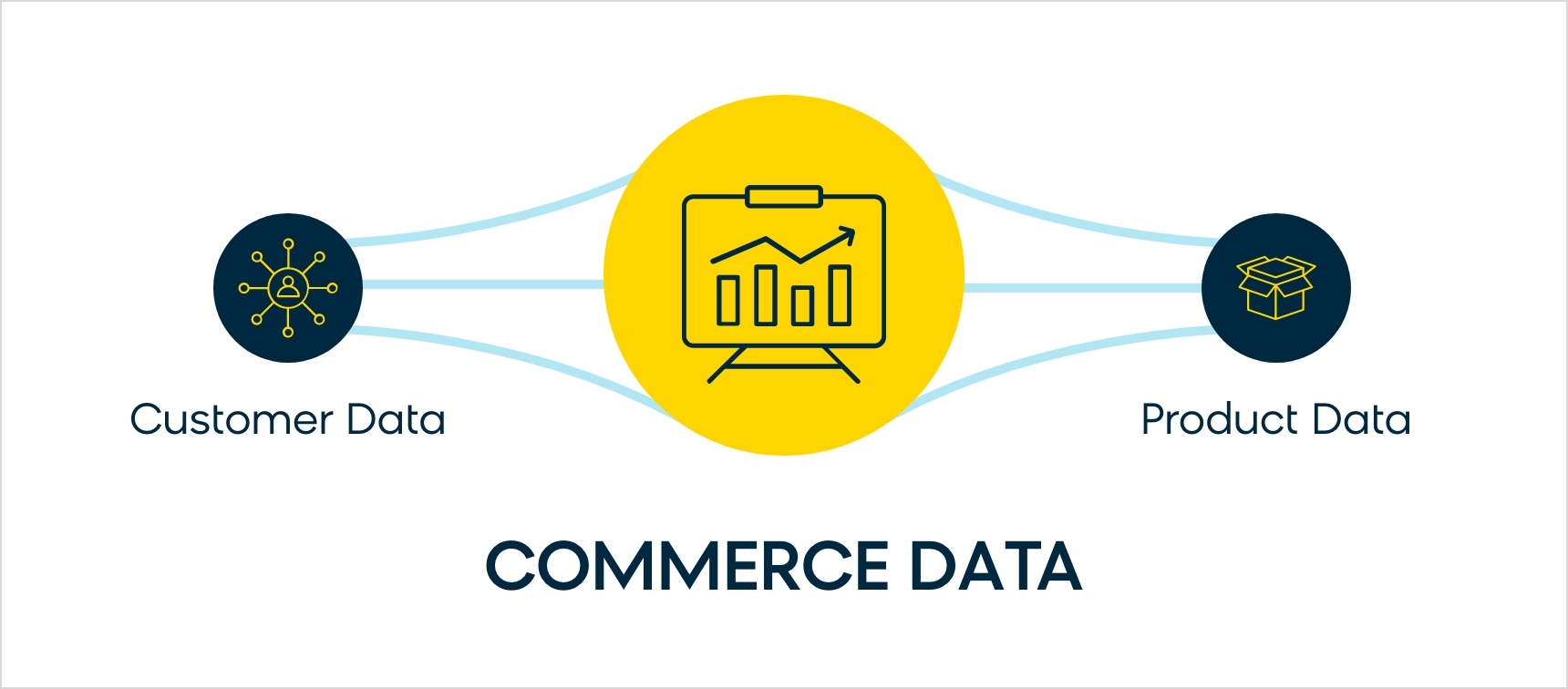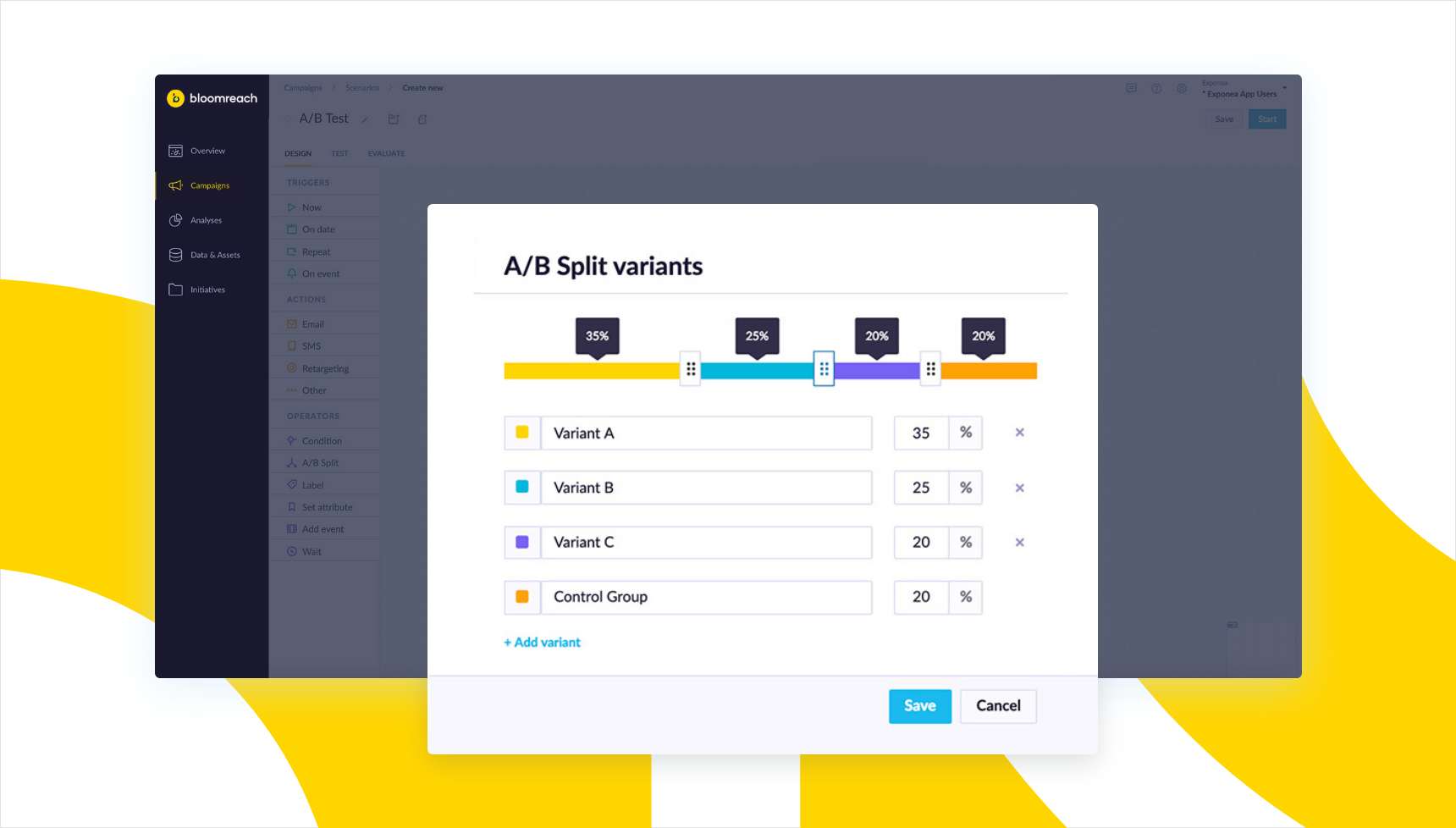Ecommerce Email Marketing: Strategies for Success
By Amelia Woolard
03/04/2024

Looking for your next online customer? Check Instagram. Or Google Shopping. Or your ecommerce app.
Today, there are multiple ways to shop online, and by extension, multiple ways to get in front of your new customers and hold up the virtual “pick me!” sign.
But despite all these options, email marketing still remains one of the best ways to drive real conversions and get serious results.
No matter what flashy new platform or app becomes popular, email marketing has consistently been the best way to reach potential customers and loyal subscribers. It's been ahead of the pack for decades and shows no sign of slipping.
That's why it is so essential for ecommerce businesses to get their email marketing strategy right. It can be a make-or-break factor for your brand's success, so it's critical that you focus on the marketing channel that offers persistent, positive results.
Keep reading to learn everything you need to know about building an effective email marketing strategy, as well as the five best practices to ensure that you're hitting the right notes.
What Is Ecommerce Email Marketing?
Ecommerce email marketing is an email strategy used by ecommerce businesses to connect with potential and existing customers with personalized communications designed to drive revenue. Many brands use an ecommerce email marketing software to power this strategy.
This type of email marketing strategy encompasses email marketing campaigns that meet customers where they are on their customer journey with your brand. It can be used to help predict future purchases or other future behavior with your company, helping every customer continue their relationship with your ecommerce business and increase their customer lifetime value.
Whether it's a welcome email, promotional emails, or other marketing messages, the purpose of ecommerce email marketing is to keep ecommerce businesses top of mind with customers via email marketing strategies. Through the use of ecommerce email best practices, brands can connect with their customers and engage them with personalized email campaigns.
Types of Ecommerce Email Marketing
Ecommerce email marketing is not just about sending emails; it's an artful blend of using your ecommerce email marketing software strategy to connect with your audience at every stage of their journey. With the right approach, each email sent is an opportunity to enhance customer experience, boost engagement, and ultimately drive sales. Let's delve into the types of email marketing for ecommerce that can transform your brand's digital presence.
Welcome Emails: Your First Impression Counts
The moment a customer signs up or makes their first purchase is golden. Welcome emails set the tone for your relationship, offering a warm introduction to your brand. They're your chance to make a great first impression, showcasing your brand's personality and what new subscribers can expect.
Abandonment Emails: Nudging Customers Back
Cart and browse abandonment emails play a crucial role in recapturing lost sales. By reminding customers of what they've left behind and possibly offering a small incentive, you gently nudge them back towards completing their purchase.
Confirmation Emails: The Power of Reassurance
Confirmation emails, including order confirmations and shipping notifications, provide customers with peace of mind. They reassure your customers that their transactions have been successful and keep them informed about their order status.
Promotional Emails: Excite and Engage
Promotional emails are all about showcasing your latest offers, products, or sales events. They're an effective way to drive traffic to your site and generate excitement around your brand. The key is to craft compelling content that resonates with your audience's interests and needs.
Personalized Recommendations: A Tailored Shopping Experience
Leveraging customer data to send personalized product recommendations can significantly enhance the shopping experience. These emails show customers that you understand their preferences and are committed to catering to their individual needs.
Loyalty and Rewards Emails: Celebrating Your Customers
Rewarding your loyal customers with exclusive offers, early access to sales, or loyalty points encourages repeat business and fosters a sense of belonging. Loyalty emails are a fantastic way to express gratitude and reinforce positive feelings towards your brand.
Re-engagement Emails: Reigniting Interest
Re-engagement emails aim to win back customers who haven't interacted with your brand in a while. Through enticing offers or updates on what's new, you can reignite their interest and encourage them to revisit your store.
Why You Need an Email Marketing Strategy
The importance of email marketing cannot be oversated. One of the main reasons that email marketing is unrivaled for your strategy is the simple fact that basically everyone has an email address.
There are over four billion email subscribers worldwide (that’s higher than Instagram’s global user base!) and that number is even more impressive when ranked against other marketing channels.
Plus, email marketing offers a direct connection to an active, engaged audience. More than 99% of consumers check their inbox each day.
Nothing Beats the ROI of Email Marketing
While the volume of email users is impressive, it’s not the only reason that email marketing remains the most popular channel for marketers. Ecommerce email marketing campaigns have continuously proven to drive sales, making email the go-to channel no matter the KPI.
From businesses just starting to form their ecommerce email marketing strategy to brands looking to thrive during a recession, email offers the kind of ROI that no marketer can overlook.
According to Litmus, businesses on average are making $36 for every $1 spent on email marketing campaigns. Some sectors are doing even better, as the chart below shows:
With a stellar user base and sales numbers to back it up, ecommerce businesses have more than enough reasons to invest in a strong strategy for their email marketing efforts.
5 Ecommerce Email Marketing Tips
If you want your ecommerce business to reap the full benefits of your email marketing campaigns, there are a few critical tips that every marketer should stick to.
No matter what stage of building your email marketing strategy you’re in — whether you’re just starting to build digital marketing campaigns or you’re refining a strategy to address your complete customer lifecycle — these fundamentals are important to keep in mind:
Make Sure You’re Reaching the Inbox
Ready for an uncomfortable truth? Simply firing off an email does not guarantee that it will reach its final destination. If your email never hits the inbox, it’ll never get read by your email subscribers, and you’ll never meet your engagement and conversion goals.
The best way to stay out of the spam folder and ensure that your email marketing efforts reach the inbox is to follow email deliverability standards.
One easy method of boosting your email deliverability is by employing a double opt-in. You’ll be familiar with double opt-ins if you’ve ever signed up for an email list and then received an email asking you to confirm your subscription. Double opt-in is important because it ensures that the person who provided the email address actually wants to hear from you.

You should also prioritize regular email list maintenance. To be effective in your emails, you must send them to the right people at the right time.
If your email lists aren’t cleaned up periodically, you risk sending messages to the inboxes where they won’t get opened or clicked through. You need to send ecommerce email marketing campaigns to people who will active engage with your messages.
When cleaning up your email lists, pay particular attention to spam email addresses or those that bounce your emails. For inboxes that don’t accept your email campaigns, take note of why those emails are bouncing. Determining whether the email is soft bounced or hard bounced can clue you in as to whether the issue is temporary or permanent:
-
A soft bounce points to a temporary issue with the inbox. Culprits could be a full inbox or a sudden increase in sending volume.
-
A hard bounce is a more permanent problem. Odds are, this inbox does not exist or is otherwise invalid.
You should also be sure to filter out any email addresses that are low-performing. Disengaged email addresses can negatively skew email marketing performance analytics and weigh down your open and click-through rate.
If you don't remove these addresses from your send list, they'll continue to receive unwanted emails — which is bad for your brand. Our recommendation? Stop wasting time with low-performing contacts and start reaching out to those who are actually interested.
Upon Sign-up, Send New Customers Something Awesome
The welcome emails you send to new email subscribers say a lot about your brand. The last thing you want to do is bungle the first impressions of your budding customer relationships by sending a welcome email that misses the mark — or worse, never arrives at all.
More than 80% of people will open a welcome email, giving welcome emails four times more opens and 10 times more clicks than a standard email.
You simply can’t pass up the opportunity that an automated welcome series provides. Luckily, you can take advantage of ecommerce marketing automation to send automated email campaigns based on triggers, such as a list subscription. These welcome emails can introduce your brand and entice your subscriber to call, click, or otherwise interact with you.
You can even sweeten the deal with a welcome offer. Everyone loves a discount code, and few can ignore the temptation to spend more with a welcome offer in hand.

In fact, online shoppers with a coupon code spend 24% more than customers without a coupon.
While you can extend a welcome offer at any time, it’s best to send one within the third welcome email to nudge your customer to take action.
Don’t Forget Email Personalization
Have you ever received an email that seemed like it was meant for someone else? It didn’t sit well, did it? That’s because you, like every modern consumer, expect personalized email campaigns from the brands you subscribe to.
Online shoppers are well aware of the data that modern ecommerce businesses collect from their interactions, and those who opt in for marketing emails do so to be served with more relevant and customized content. That’s why email personalization in your ecommerce email campaigns is so important, especially shortly after someone subscribes.
Far more than an email marketing buzzword, ecommerce personalization lends a human touch to your outreach efforts. Like opening an email from a friend, customers are more likely to open and click on emails that contain personalized content.
Read This Next: Ecommerce Personalization: Your Complete Guide
Not only is personalization crucial for your business goals, but customers also expect it. 71% of consumers expect personalized experiences from businesses. If you offer anything less, your customers will be disappointed.
When it comes to ecommerce email marketing personalization, commerce data is a great place to start. Commerce data is a blend of customer data (e.g., purchase history, personal demographics, etc.) and product data (e.g., the brand, color, or style of an item).

Commerce data provides advanced insights into how your shopper might spend money on your online store. Gather this data and harness it well, and you’ll be well on your way to personalized email marketing campaigns that convert and engage.
Personalization can even be as simple as sending special offers on birthdays or first purchase anniversaries. Everyone loves a birthday gift, and as mentioned above, online shoppers tend to spend more when they have a coupon code. Remembering first purchase anniversaries can also make your shopper feel special, especially if their first purchase was something sentimental.
Even simple tactics like adding personalized subject lines to your emails make them 26% more likely to be opened. And including personalized calls to action increases your conversion rates by 202%.
For even deeper personalization, you can also take advantage of first-party and zero-party data. Use a customer’s previous engagement metrics (such as the day and time they tend to open emails and their product preferences) to inform your future communications, or collect data directly from the consumer to create hyper-personalized content.
For truly personalized marketing emails, an all-in-one platform that combines customer data and AI-driven marketing automation is a must to effectively personalize your ecommerce email marketing at scale.
Keep in Touch With Follow-Up Emails
You’ve secured your spot in your subscriber’s inbox, deployed an out-of-this-world welcome email series, and personalized every touchpoint along the way. Now what? Is there any way to get back on your customer’s radar without annoying them to the point of hitting “unsubscribe”?
The short answer: Of course! These types of emails are known as follow-ups, and they’re the email equivalent of the “just checking in” text. Follow-ups can help you shatter the white noise of the average inbox and get you back in front of your loyal customers with a timely and relevant message.
One of the best follow-up emails is the abandoned cart email. That’s because out of every 100 shopping carts, 70 of them are abandoned. That’s a lot of revenue being left in the checkout line, all because your customer decided against purchasing at the last minute.
Abandoned cart campaigns remind your shoppers of products they left behind and urge them to purchase them before they disappear. By sending these emails, you tap into shoppers' fear of missing out and encourage sales that combat it.

Win-back or reengagement emails offer another smart way to increase customer engagement with your subscribers. These emails are perfect for your business if it’s been a while since you’ve seen your subscriber take any action on your website, and you want to draw their attention once more.
Win-back campaigns can vary. You can entice subscribers to view products similar to those they’ve already browsed, offer an exclusive discount code, or provide discounted shipping for a limited time.
There’s an art to win-back campaigns, which is why you’ll want to make sure you can recommend the right products and automatically determine the best calls to action to boost your odds of success.
Finally, customer feedback emails and review requests are a great way to solicit feedback from your customers while also reintroducing them to your brand experience. There’s no better person to ask about your brand experience than your customer, and the feedback you’ll receive is bound to improve your business overall.
Test, Test, Test
Is your target audience more likely to click on a funny subject line or a more serious one? Are they more likely to click on your email during the morning or the afternoon?
If you don’t know the answers, then you should A/B test your emails (and if you do know, you should still keep A/B testing them!).
A/B testing is the unsung hero of awesome email marketing. With A/B testing, you can test the waters with subject lines, CTAs, graphics, and more to learn what your customers are drawn to.
A/B testing is also the perfect medium for play with GIFs, emojis, and puns. When peppered in occasionally, these fun elements can spice up your email marketing messages and lend it a certain air of relatability.
First-party data is the heartbeat of A/B testing. If you've ever added a first name to a subject line, you've worked with first-party data. First-party data can also be used to make informed experimental decisions about CTA buttons and color schemes.
When you’re ready to dive deeper into testing, first-party data serves you well in projects like automated email sequences, which can dynamically adjust based on how your customer responds to every touchpoint along the way. Bloomreach can both facilitate these changes and track your customer’s response to them, so your message is even more targeted next time.

This is done with the power of AI, which can take your A/B testing to the next level and craft ecommerce email marketing campaigns that speak directly to your customers.
AI-powered contextual personalization is the next stage of A/B testing’s evolution. It relies on artificial intelligence and machine learning — rather than human-defined rules — to make decisions about what to show customers by taking their individual context into account.
A customer’s context includes first-party data about their relationship with your brand, such as clicks on your website, past purchases, opened emails, and so on. AI aggregates all this information for each customer automatically, analyzes these insights, and selects the correct A/B variant based on this context.
With contextual personalization, your testing isn’t restricted to offering the best variant that works best for the majority of your audience. You can offer a personalized experience to each customer, offering them the variant that works best for their individual preferences and is most likely to foster customer engagement.
How to Track Ecommerce Email Marketing Performance
Tracking the performance of your ecommerce email marketing endeavors is crucial for fostering growth and engagement. By focusing on key metrics, you can gain valuable insights into the effectiveness of your strategies and make informed decisions to optimize future campaigns.
List Size and Growth: The size and growth of your email list serve as barometers for gauging the resonance of your brand with consumers. Keeping an eye on these numbers helps to identify trends in audience interest and allows for targeted expansion efforts. Quality should be prioritized alongside quantity to ensure that the list is comprised of engaged and relevant subscribers.
Open and Click-Through Rates: The open and click-through rates of your emails provide a window into consumer engagement. A high open rate signifies the effectiveness of compelling subject lines, while a strong click-through rate indicates that the content resonates with your audience, encouraging them to take action.
Deliverability and List Health: Ensuring that your emails reach their intended recipients is essential for success. Monitoring email deliverability and list health, including managing bounce rates and minimizing spam complaints, is critical for maintaining a healthy and engaged subscriber base.
A/B Test Results: A/B testing offers the opportunity to experiment with different elements of your emails, such as subject lines, visuals, and calls to action. Analyzing the results provides valuable insights into what resonates most effectively with your audience, enabling you to refine your approach and enhance the impact of your campaigns.
Revenue: Ultimately, the revenue generated from email marketing serves as the ultimate measure of success. It ties the performance of your campaigns directly to tangible business outcomes, revealing the true impact of your efforts on the bottom line.
By monitoring these core metrics, you can gain a comprehensive understanding of how your email marketing initiatives are performing, empowering you to make data-driven decisions and refine your strategies to drive sustainable growth and tangible results.
Bloomreach Simplifies Ecommerce Email Marketing
Navigating modern email marketing can feel like wading into waist-deep water without a life jacket at the ready. But ecommerce email marketing doesn’t need to be sink or swim.
Bloomreach Engagement is an omnichannel marketing solution that makes sense of welcome emails, personalization, A/B testing, and more. Bloomreach Engagement can:
-
Deploy double opt-ins, so your email successfully reaches the inbox
-
Send a timely and interesting welcome email series shortly after sign-up
-
Segment your contact lists and and personalize your message accordingly
-
Coordinate follow-up emails that keep your brand top of mind
-
Facilitate A/B testing and factor results into future campaigns
Best of all, you can automate all of these processes using an intuitive, omnichannel platform that reduces your reliance on IT teams and empowers your marketing team to drive conversions and engagement like never before.
Curious to learn more about how Bloomreach Engagement can help you reach your business goals? Check our product capabilities page to learn more.
Ecommerce email marketing offers a myriad of benefits for your business. By leveraging personalized communication, you can foster lasting relationships with customers, driving increased brand awareness and customer retention. This cost-effective strategy not only boosts traffic to your website but also provides a direct channel for promoting products, ultimately contributing to revenue growth. With its ability to deliver targeted content and promotions, ecommerce email marketing stands as a powerful tool for enhancing your online presence and engaging with your audience in a meaningful way.
Essential tools include a robust email marketing platform for seamless campaign management and automation. Additionally, leveraging customer segmentation tools enables personalized content delivery, while analytics platforms provide valuable insights into campaign performance. Integration with ecommerce platforms and CRM systems fosters a holistic view of customer interactions, aiding in crafting targeted, engaging emails. Furthermore, A/B testing tools empower optimization efforts by refining subject lines, content, and calls to action, ensuring consistent, authoritative engagement with your audience. Bloomreach Engagement provides all of this in an easy-to-use interface that requires minimal IT assistance.
When it comes to ecommerce email marketing, embracing best practices is crucial for driving meaningful engagement and sustainable results. Start by crafting compelling subject lines and personalized content to capture the audience's attention. Utilize segmentation to tailor your emails to specific customer groups and optimize deliverability. Encourage interactivity through clear calls to action and visually appealing designs, all while prioritizing mobile responsiveness. Finally, regularly analyze performance metrics to refine your strategies, ensuring continuous improvement and maximum impact in your ecommerce email marketing efforts.
Craft compelling subject lines that captivate attention, and personalize the content to make it relatable to your customers. Utilize smart, concise language to convey valuable information, paired with visually appealing designs that maintain consistency across all channels. Encourage interaction through clear calls to action and ensure mobile responsiveness for seamless engagement. By consistently following these best practices, you can create ecommerce email marketing content that is not only engaging but also aligns with your brand voice, fostering strong connections with your audience.
To measure the effectiveness of your ecommerce email marketing campaigns, it's crucial to leverage key performance indicators such as open rates, click-through rates, conversion rates, and overall engagement metrics. Analyzing these insights provides valuable feedback on the impact of your campaigns, helping you understand customer behavior and preferences. Additionally, tracking revenue generated from email marketing efforts offers a direct correlation to campaign success. By consistently monitoring these metrics and iteratively optimizing your strategies based on the findings, you can ensure that your ecommerce email marketing campaigns align with your brand's confident, friendly, smart, and relatable voice while driving impactful results.
Found this useful? Subscribe to our newsletter or share it.





